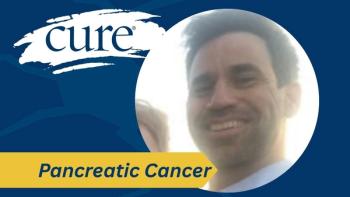
Treatment Options Are Not ‘One-Size-Fits-All’ in Head and Neck Cancers
Key Takeaways
- Personalized treatment for oropharyngeal cancer is essential, with patient involvement in treatment decisions being crucial for optimal outcomes.
- Radiation and transoral robotic surgery offer similar survival rates, making quality of life considerations, such as swallowing, important in treatment choice.
In patients with oropharyngeal cancer, deciding whether radiation therapy or surgery is the best option depends on their lifestyle and their values.
These days, medicine is not “one-size-fits-all,” especially for patients with oropharyngeal cancer, an expert told CURE®.
For patients with oropharyngeal cancer, having a say in what treatments they receive is important. Recent research demonstrated that radiation versus transoral robotic surgery showed
Oropharyngeal cancer is a type of cancer that originates in the oropharynx, a part of the throat behind the mouth opening, as defined by the National Cancer Institute.
Asking for opinions from the radiation oncologist or surgeon may help patients make the right decision, which can be “better for everybody,” explained Dr. David Palma during an interview with CURE®.
Palma is a radiation oncologist and professor at Western University in Canada.
He sat down with CURE® to discuss the importance of tailoring treatment options that best-fit patients’ needs and quality of life.
Transcript:
Medicine, years ago, used to be a one-size-fits-all thing where you come to your doctor and they tell you what you need, and then you do it. And our society has evolved so much since then.
Patients are so unique. They're very individualized, and they have different priorities. You might have a patient who has had a family member go through surgery, had a good experience and wants to do surgery. Or had a bad experience and [don’t] want to have surgery. Some people have fears of radiation, which requires a mask to immobilize [them] on the table.
Some patients have medical problems, which makes the surgery more risky. Everybody has different preferences, and I'm always surprised. It's actually very refreshing — you'll go into a room with a patient and have a discussion about treatment, and you'll think they're going to go one way, and they say, “No, I want to go the other way.” And it really gives patients a feeling of control [over] what they want to do.
There are some patients who want to be told what to do. They'll say, “Well, what do you recommend? What would you do if it was you or your wife?” And that's fine too, but it is good to be able to give people these options. And I think it's a different way of practicing medicine from a few decades ago, and it's, I think, better for everybody.
Transcript was edited for clarity and conciseness.
For more news on cancer updates, research and education, don’t forget to




